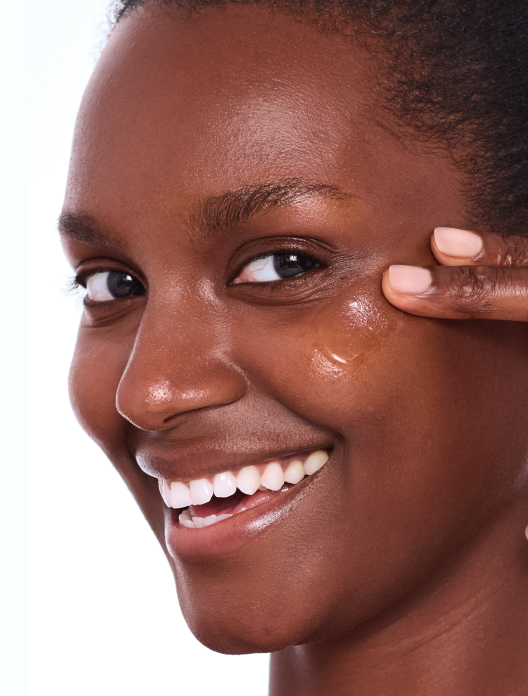

Tiptoe In
Kind-to-skin exfoliant for radiant skin, suitable for all skin types

Don’t let the name scare you away. The word chemical may be more commonly associated with heavy-duty household cleaning products, but really, almost everything is technically a chemical – even water.
Chemical or liquid exfoliation is the process of exfoliating with ingredients that sit within three key families: alpha-hydroxy acids, beta-hydroxy acids and poly-hydroxy acids. These ingredients can be found in a number of different formats, including cleansers and masks, but are most often in products called liquid exfoliators or acids.
Chemical exfoliation works by breaking down the bonds that hold dead skin cells to the surface of our skin. Why is this helpful, you might ask? It’s all about giving our skin a helping hand.
Our skin is, on the whole, pretty self-sufficient, and does a good job of looking after itself. It’s busy behind the scenes and constantly producing new skin cells. However, it’s not always brilliant at pushing the older skin cells, which we no longer need, off the skin in a timely manner. This worsens as we age, as the rate at which cell turnover occurs naturally slows. Dead skin cells that outstay their welcome can cause a number of different problems in the skin including dullness, rough texture and breakouts. For this reason, it’s always best to send them on their way, and chemical exfoliation will help you do so.
If you’re reading this and thinking “chemical exfoliation sounds great but how is it different to my trusty scrub?” then allow us to enlighten you. Manual exfoliation has the same benefits as chemical exfoliation, but you’ll notice that your skin feels softer straight away. It just takes a longer, more labour-intensive, and arguably messier, route to get there. Using a scrub to dislodge dead skin cells requires rubbing at the skin, which can aggravate it, especially if you have angry breakouts or areas of sensitivity. Also, not all scrubs use grainy particles that are smooth and gentle on the skin. In fact, some are the exact opposite, and have sharp edges that create teeny tiny tears in the skin. Check the consistency to find one that is right for your skin. Chemical exfoliants can be simply swiped on, working their magic without disrupting or damaging your complexion.
Now we’ve established what liquid exfoliants are, we can dive into the different types. There are three:
Let’s start with AHAs, which are a family of ingredients made up of things like lactic and malic acid. They are widely considered to be the gold-standard of chemical exfoliation. They work on the top levels of the skin, and are great at reducing the appearance of fine lines and hyperpigmentation, as well as restoring lost luminosity. They are strong ingredients, and are only really suitable for experienced acid users. If you’re new to the chemical exfoliant party, we recommend you start with something gentler.
This brings us onto poly-hydroxy acids, including gluconolactone and lactobionic acid. Widely considered the next generation of chemical exfoliants, PHAs work in the same way as AHAs. The real difference is their molecule size, as PHAs are much larger. This means they’re not able to penetrate the skin quite as deeply or efficiently, working more on the very surface. PHAs also have the added benefit of humectant properties, which means they attract moisture to the skin. The risk of irritation is far lower with PHAs than AHAs, making them suitable for even sensitive skin types.
Finally there are beta-hydroxy acids, most commonly found on your ingredients list as salicylic acid. Think of them as the cousin of AHAs and PHAs – they’re closely related but have different qualities. Salicylic acid, the most commonly used beta-hydroxy acid, is oil soluble, and oil likes oil, which makes it the perfect choice for oilier skin types. This feature allows the acid to travel slightly deeper into the pores in order to clear away dead skin cells. Like AHAs, BHAs are powerful ingredients, so introduce slowly to your routine to reduce the risk of irritation.
Chemical exfoliation can help with the following skin concerns:
Dehydration
Dullness
Rough texture
Hyperpigmentation
Fine lines
Congestion
Breakouts
Almost everyone can benefit from incorporating a chemical exfoliant into their routine – it’s just a case of finding the right formula.
Shop the article


Kind-to-skin exfoliant for radiant skin, suitable for all skin types


Clarifying complex to tackle blemishes


Highly active exfoliant for glowing skin, suitable for all skin types except sensitive